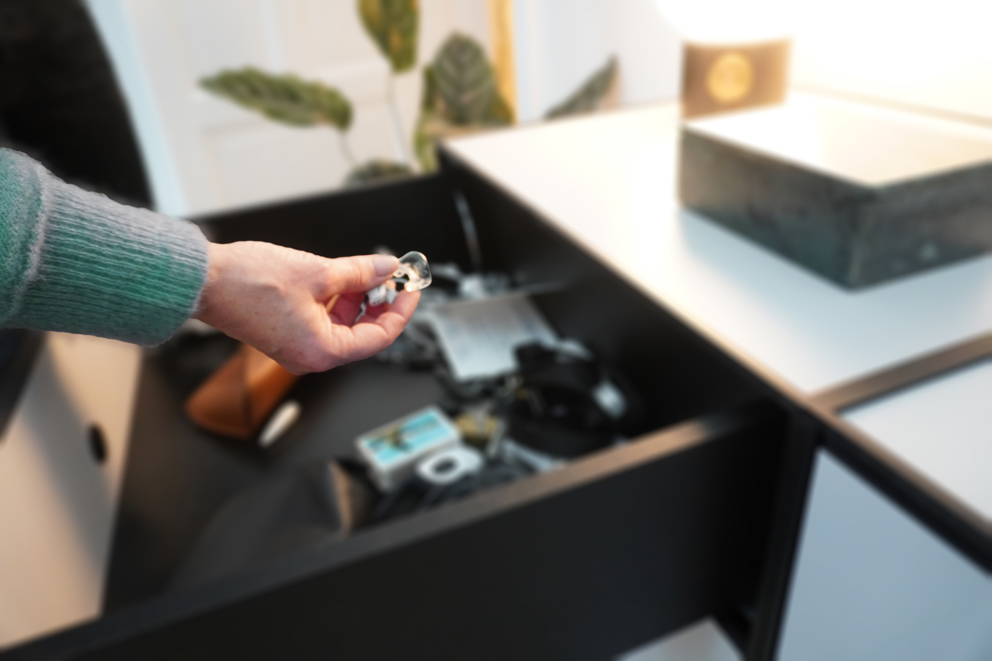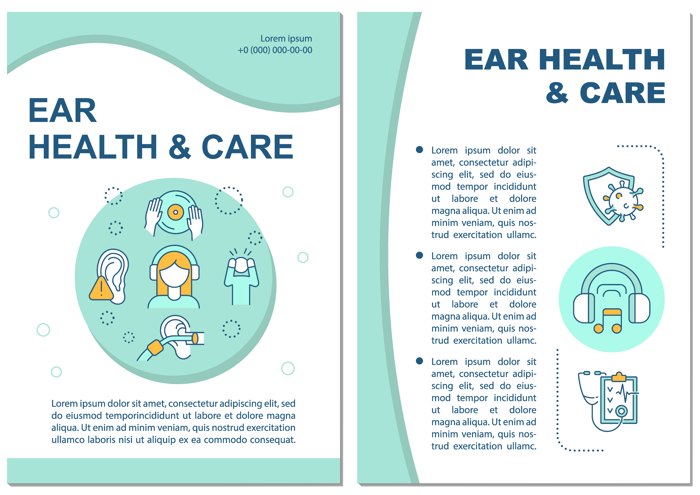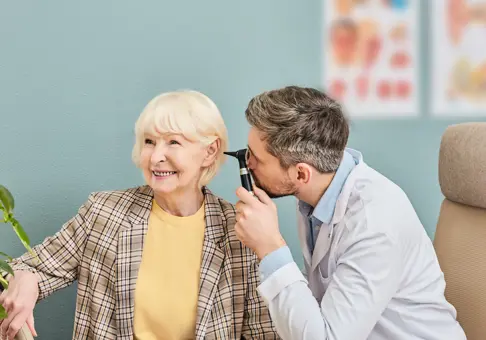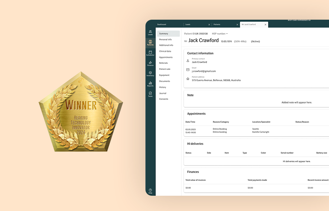
Research shows that that only one-third of people with hearing loss wears hearing aids, yet 83% of hearing aid wearers report high satisfaction with their devices. That means if you can convince your customers to buy and wear their hearing aids, they’re likely to have a great experience with them. So, how do you help them overcome objections and wear the recommended devices?
The Problem
There’s a stigma around hearing aids, as people perhaps fear that wearing them makes them seem old, sick, or weak. Others may avoid getting hearing devices because of the cost. (But even in countries where hearing aids are free, only 50% of people with hearing loss have them). Or they may think hearing aids will be very noticeable in their ears. They might worry that it will be a hassle to wear and use them or that it’s just “one more thing” to think about each day. Some people may go buy the hearing aids they need, but then throw them in a drawer, unused, because they were not onboarded correctly on how to use them.
Moreover, up to 50% of clients return their hearing aids after trial, which is a waste of your staff's time and effort. To maximize sales and usage – and minimize returns – be proactive with your communication efforts during the hearing aid trial period to onboard new users and ensure that your customers remain informed, comfortable, and happy.

What Can You Do
The good news is that there is a lot you can do to persuade customers to buy and use a hearing aid, make the journey easier for them, and resolve their biggest worries. These efforts – via a sound communications strategy – will help your customers become happy hearing aid users.
Convince
You can help diminish the perceived stigma around hearing aids by showing customers how beneficial the devices can be and demonstrating how technologies have improved over the past few years. Emphasize that the new hearing aid models are sleek, comfortable, and barely noticeable, and there are great solutions at a variety of price points.
Onboard
During the hearing aid trial, your clients are experiencing something completely new and foreign to them and will need your guidance and support. Explain that you will be communicating with them over the coming weeks, providing information and advising to help them on their journey. Tell them you will be reaching them through phone calls and sending messages with different content support links. Ask them which communication channel they prefer. Some customers will be happy with email, while others might prefer texts, Whatsapp messages, or Facebook messenger.
At the end of the fitting, discuss the adjustment period with the client, detailing what will happen in the upcoming weeks. Set future appointments and book them into your scheduling system. Set a reminder to check in with each new user on day three and set their next appointment in 8-14 days. Our Practice Management Software lets you easily and efficiently schedule all necessary appointments, then provides automatic reminders for both you and your customer.
Free Guide
How to Convert More Leads into Paying Customers
Acquiring new leads for your hearing clinics can be both time-consuming and expensive. It's crucial for your team to be fully equipped for each scheduled visit, maximizing every interaction with potential clients. This guide offers a meticulously planned appointment blueprint, coupled with insights and strategies for creating a compelling journey for first-time hearing aid users. This approach empowers your team to offer a consistently high-quality customer experience, thereby increasing the conversion of leads into loyal clients.

Getting Familiar With The Hearing Aids
At the end of the first fitting, send the customer home with a document outlining relevant information about their hearing aids. The document should not be exhaustive but cover the necessary details, such as changing batteries, cleaning and caring for the aids, and changing wax guards. These documents should also cover putting the hearing aids in and any wear strategy you have set, such as increasing wear hours over time. This content should also be available on your website, if mails are preferred, send the customer communications with links to it.
Possible Content Could Include:
- Inserting your hearing aids. Consider the need for documents for different model types, such as BTE, IIC.
- Getting familiar with your hearing aids. Different documents for different types of hearing aids.
- How to make hearing aid batteries last
- Keep your hearing aids safe and dry
- How is your listening experience? Get feedback from them and discuss possible accessories, such as TV streamers, that could enhance their experience
- Managing earwax and changing wax guards
- Why you made a great choice: 5 reasons to treat hearing loss
- Should you wear hearing aids all the time?

Setting out an onboarding strategy for the trial period allows you to develop the content you need and determine your communication schedule. This process should:
- Align expectations. Once the customer receives their hearing aids and has them fitted, they need to understand the next steps regarding communications from your clinic, what to do if there are questions or problems with the hearing aids, where to find additional information, how to book their next appointment, etc.
- Communicate regularly to onboard the customer. This will be a combination of telephone calls, emails, texts, Facebook messages, and Whatsapp messages to check in, see how they’re doing, answer any questions, remind them of upcoming appointments, and troubleshoot if they’re having any problems with their devices. And then stagger more content to help them learn about their devices and become increasingly comfortable wearing them.
- Offer remote appointments. Some customers may prefer a remote check-in as part of their follow-up care, so make sure they know this is a feasible option. Just like scheduling in-person care visits, schedule remote appointments (and reminders) through the practice management software.
- Set up standardized workflows for future appointments in the clinic. Use the software to easily schedule upcoming appointments and send out reminder messages to the customer prior to their appointments.
As part of this process, you’ll need to develop and deliver onboarding communications content, including hearing aid basics, how to clean the hearing aids, how to change batteries, tasks customers should do at home, wearing instructions, etc. Don’t reinvent the wheel. Hearing aid manufacturers provide videos detailing cleaning, care, and changing wax guards on their devices. Use these videos (and/or links to their websites) as part of your content strategy.
There will be initial work to generate the content, but once you have developed these materials, it will be simple to re-use the information in your regular outreach to customers.
With Auditdata Manage you can store and send documents directly from the system. This means that you have an easy way to update, send and track your after-sales support.
While the initial follow-up period is important, it is also crucial that you continue to keep in touch throughout the customer journey. Annual hearing checks, clean and care days, new technology demonstration days, newsletters, and special offers for existing customers are all part of building and maintaining a relationship. Doing so will help keep your customer loyal to you and make it a no-brainer to return to you when they want to upgrade.
A sound Practice Management Software will help with your efforts, allowing you to automate the communication schedule. This strategy will help ensure that each customer does well with their hearing aids, keeps them, and wears them. It also enhances the customer experience, which means they are more likely to stay with your clinic and recommend you to others.
Other Blogs You Might Enjoy:

Why People Don't Wear Their Hearings Aids - Responding to Common Hearing Aid Objections
No one wants to have a hearing loss, and most people are not excited about the prospect of needing hearing aids. How can you, as a hearing care provider, help them overcome the barriers and realize the benefits of getting hearing aids?

What Do Your Hearing Aid Users Need?
If someone suspects they have hearing loss, they should see an audiologist for a hearing screening to determine whether they need hearing aids. But then what happens? This blog explains how to give your patients what they need for success with their hearing aids, such as setting proper expectations, providing care and maintenance tips for the devices, offering valuable tips before they buy, and providing ongoing aftercare.

Overcome These 6 Common Sales Mistakes to Maximize Hearing Clinic Sales
Sales is the most important metric for any retailer, and audiology clinics are no exception. This post explains how to overcome some common challenges to maximize sales, profits, and customer satisfaction.
Don't Miss Out On the Latest Insights On Audiology
Sign up today to receive exciting updates, tips, and the latest newsletters from Auditdata.





